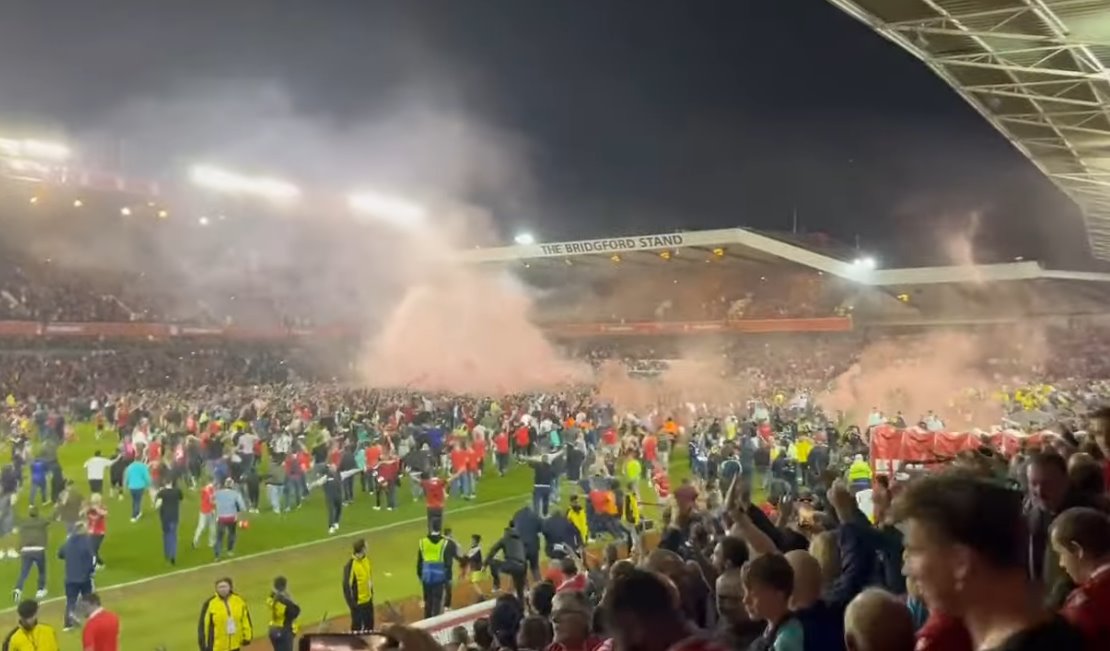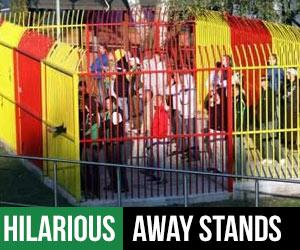Want to buy pyrotechnics? Visit pyro.ultras-tifo.net

From the 1970s to the 1990s, Nottingham Forest was a force to reckon with. In 1992, they formed the circle of clubs that made up the Premier League. With Brian Clough in charge, the club finished in the top 10 three consecutive times. There was a promise of better football in the newly-created division, and the club was eager to stake its claim.
However, despite a legendary manager in charge and elite players Luke Ian Woman, Scot Pearce, Roy Keane, and Scot Gemmill in the lineup, Nottingham Forest ended the season at the bottom, dangling above the relegation zone by a mere nine points, winning only 10 of 42 games.

But they wouldn’t evade relegation for long and succumbed to life in the championship soon afterwards. But even the English second-tier proved too competitive for the struggling side, and they slipped into third-tier football in 2005. Despite many touting the club to bounce back into the Championship and the EPL soon afterwards, Nottingham Forest struggled to find their momentum. They didn’t even top the division or qualify for the playoffs—it was a rather dismal campaign.
Return to the English Premier League (EPL)
The atmosphere at Wembley was thick as a blanket during Nottingham Forest’s face-off against Huddersfield. The latter had been in the EPL mere seasons ago, but it’d been decades since Forest last graced the top division. Such a high profile match with history to back it up was a major draw for bettors, fans, and spectators alike. Bookmarkers like 10Bet Kenya and the likes saw a surge in traffic as players staked on the newest team to compete in the English topflight.
Manchester United’s loan prodigy, James Garner, began the qualifying move by delivering a perfect cross into the penalty area, with Colwill slipping it past Huddersfield’s Lee Nicholls to put the Reds 1-nil up.
Huddersfield was all bark and no bite for the remainder of the match, with Forest clinging to their lead. And as the referee’s whistle went, Forest had regained their place in the Premier League, writing their names in the book of champions once more. It’d been 23 long years of playing in the second and third tier of English football. But they were back!
A Championship Miracle
Despite a sturdy performance to edge out Huddersfield, Forest didn’t start the 2021/22 season on a high. Despite hiring a proven promotion manager like Chris Hughton, who’s famous for leading Brighton, Norwich City and Newcastle back into the EPL—Forest was a sorry side languishing at the bottom half of the table.
Then came Steve Cooper in September to turn their fortunes around. Forest played beautiful football—a side to watch, picking up more points than any other team in the Championship. Soon, they were in the qualification scrap. Even the most committed of fans would have doubted the club’s ability to pull through and win at Wembley for the first time in nearly three decades.
But then again, the fans are no strangers to football miracles. Forest had escaped the second division to claim the first division title a year later in 1977. After that, they added two consecutive European Cups to their trophy cabinet.
Reigniting Rivalries
Nottingham Forest’s arch-rivals sit on the other side of the A52: Derby County. Both clubs share a storied history, including famous manager, Brian Clough, who led both sides to multiple successes over the years. However, Derby County hasn’t shared similar fortunes as their rivals, having slipped to the EFL League One instead.
In the Premier League, Nottingham Forest can look forward to the rivalry of neighbouring East Midlands club, Leicester City. The Foxes might have their hands full battling the Big Six for dominance in the EPL, but they share a competitive rivalry with the newly-promoted side. Other rivalries exist in fellow EPL teams like Tottenham Hotspur and Aston Villa.
Another rivalry buried under decades of history is one between Liverpool and Nottingham Forest. Between the 1970s and 1980s, Liverpool’s biggest rivalries weren’t with Everton or Manchester United but with Forest. Within that time, the Midlands was home to two league titles, three league cups, and three European Cups within six seasons, with Aston Villa and Nottingham Forest hoarding these titles.
Villa’s successes were without effect on Liverpool. But not Forest, who was a bone of contention for the longest time. In fact, when Liverpool lifted the European Cup in the 1981 final, fans chanted “are you watching Nottingham?” under the bright lights of the Parc des Princes. For the fans and players who experienced that era, the Liverpool-Forest rivalry was one for the ages.









